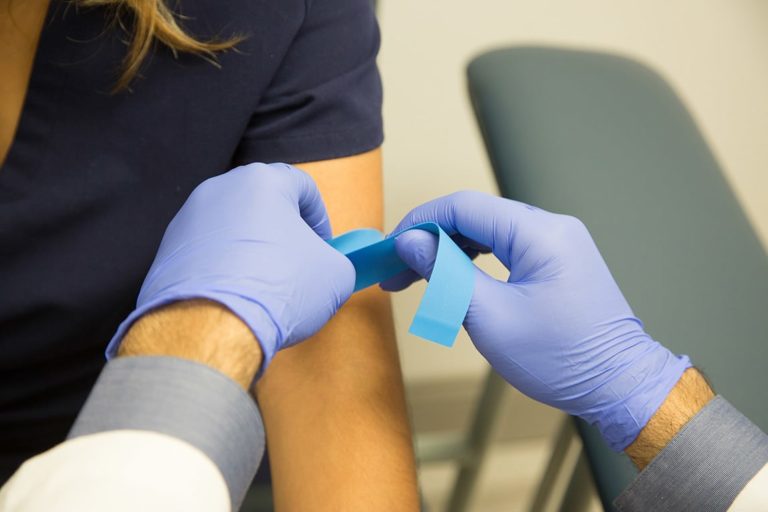Fascination About Northeast Medical Institute - New Haven Campus Phlebotomy Course & Cna Class
Fascination About Northeast Medical Institute - New Haven Campus Phlebotomy Course & Cna Class
Blog Article
The 9-Minute Rule for Northeast Medical Institute - New Haven Campus Phlebotomy Course & Cna Class
Table of ContentsThe Of Northeast Medical Institute - New Haven Campus Phlebotomy Course & Cna ClassFascination About Northeast Medical Institute - New Haven Campus Phlebotomy Course & Cna ClassNot known Facts About Northeast Medical Institute - New Haven Campus Phlebotomy Course & Cna ClassThe Single Strategy To Use For Northeast Medical Institute - New Haven Campus Phlebotomy Course & Cna ClassSome Known Factual Statements About Northeast Medical Institute - New Haven Campus Phlebotomy Course & Cna Class Northeast Medical Institute - New Haven Campus Phlebotomy Course & Cna Class Things To Know Before You Get This
The use of such gadgets must be gone along with by other infection prevention and control techniques, and training in their use. Not all safety and security devices apply to phlebotomy. Before selecting a safety-engineered tool, customers need to completely examine offered tools to determine their suitable usage, compatibility with existing phlebotomy methods, and efficacy in shielding staff and individuals (12, 33).For settings with reduced sources, expense is a driving aspect in purchase of safety-engineered gadgets - CNA Training. Where safety-engineered tools are not readily available, knowledgeable use a needle and syringe is appropriate. Unexpected exposure and particular details regarding an event should be taped in a register. Support solutions must be promoted for those that go through accidental direct exposure.
Among the essential markers of quality of treatment in phlebotomy is the participation and cooperation of the patient; this is mutually beneficial to both the health and wellness employee and the client. Clear information either composed or spoken need to be available to every individual that undergoes phlebotomy. Annex F offers sample text for describing the blood-sampling treatment to a person. In the blood-sampling room for an outpatient department or clinic, provide a comfy reclining couch with an arm rest.
Northeast Medical Institute - New Haven Campus Phlebotomy Course & Cna Class for Beginners
Guarantee that the signs for blood sampling are plainly defined, either in a composed procedure or in documented instructions (e.g. in a lab kind). At all times, adhere to the methods for infection prevention and control provided in Table 2.2. Infection avoidance and control methods. Collect all the tools needed for the procedure and area it within secure and very easy reach on a tray or trolley, making sure that all the things are clearly noticeable.
Present on your own to the patient, and ask the client to state their full name. Check that the laboratory type matches the individual's identification (i.e. match the individual's details with the research laboratory type, to ensure exact recognition).
Make the person comfy in a supine placement (if feasible). Location a clean paper or towel under the individual's arm. Talk about the test to be performed (see Annex F) and get verbal permission. The person has a right to reject a test at any kind of time before the blood tasting, so it is essential to ensure that the individual has comprehended the treatment.
The 7-Minute Rule for Northeast Medical Institute - New Haven Campus Phlebotomy Course & Cna Class
Expand the individual's arm and inspect the antecubital fossa or useful reference lower arm. Situate a blood vessel of an excellent size that is noticeable, straight and clear.
DO NOT insert the needle where blood vessels are drawing away, since this boosts the possibility of a haematoma. Locating the capillary will help in determining the right dimension of needle.
Haemolysis, contamination and visibility of intravenous fluid and medication can all change the results (39. Nursing staff and doctors may access main venous lines for specimens following methods. Samplings from central lines lug a risk of contamination or wrong laboratory examination results. It serves, yet not suitable, to injure specimens when initial presenting an in-dwelling venous gadget, before linking the cannula to the intravenous liquids.
Excitement About Northeast Medical Institute - New Haven Campus Phlebotomy Course & Cna Class
Permit the location to completely dry. Failure to allow enough get in touch with time boosts the risk of contamination. DO NOT touch the cleaned up website; specifically, DO NOT place a finger over the capillary to assist the shaft of the exposed needle. It the site is touched, repeat the sanitation. Carry out venepuncture as complies with.
Ask the patient to create a clenched fist so the blood vessels are more prominent. Enter the blood vessel quickly at a 30 degree angle or less, and proceed to introduce the needle along the blood vessel at the easiest angle of entry - Phlebotomy Classes. When adequate blood has been accumulated, release the tourniquet BEFORE taking out the needle
Some Known Details About Northeast Medical Institute - New Haven Campus Phlebotomy Course & Cna Class
Withdraw the needle delicately and apply gentle pressure to the website with a tidy gauze or dry cotton-wool round. Ask the individual to hold the gauze or cotton woollen in place, with the arm prolonged and elevated. Ask the patient NOT to flex the arm, because doing so creates a haematoma.

The Greatest Guide To Northeast Medical Institute - New Haven Campus Phlebotomy Course & Cna Class
Do not press the syringe plunger because additional stress increases the threat of haemolysis. Where feasible, maintain televisions in a rack and relocate the shelf in the direction of you. Inject downwards into the appropriate coloured stopper. DO NOT remove the stopper because it will certainly launch the vacuum. If the sample tube does not have a rubber stopper, infuse exceptionally gradually into television as minimizing the stress and rate made use of to transfer the sampling lowers the risk of haemolysis.

Report this page